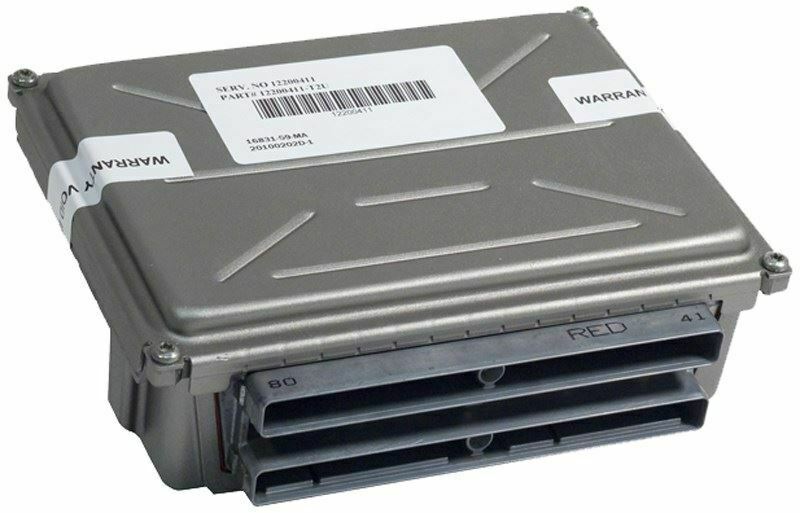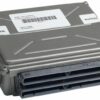Is Your 2004 GM Truck or SUV Running Rough?
If your 2004 GMC Yukon XL 2500, Silverado, Sierra, or another compatible GM vehicle is experiencing frustrating issues like a persistent check engine light, erratic shifting, poor fuel economy, or a no-start condition, a failing Powertrain Control Module (PCM) could be the culprit. The PCM, often called the Engine Control Module (ECM), is the central computer of your vehicle. It manages everything from fuel injection and ignition timing to transmission shift points. When it fails, the symptoms can be widespread and difficult to diagnose, but replacing it is often the definitive solution.
From the Diagnostic Bay
We had a 2004 Sierra 2500 with the 8.1L V8 come into the shop with a complaint of intermittent stalling and a check engine light that multiple shops couldn’t solve. The owner had already replaced the crank sensor and a few other parts. Our scan tool showed a U-code for lost communication with the PCM. After verifying the power and ground circuits to the module were solid, we knew the internal logic of the original PCM was failing. We installed one of these VIN-programmed modules, performed the quick security relearn, and the truck ran perfectly. It’s a classic example of how a faulty computer can mimic sensor or wiring problems, making a quality, correctly programmed replacement essential.
Common Symptoms of a Failing PCM
- ✔ Persistent Check Engine Light (CEL) with various trouble codes, especially communication or internal processor fault codes.
- ✔ Engine stalling, stumbling, or misfiring for no apparent reason.
- ✔ Harsh or erratic automatic transmission shifting.
- ✔ A complete no-start condition where the engine cranks but won’t fire up.
- ✔ Noticeable decrease in fuel efficiency.
- ✔ Failure to communicate with diagnostic scan tools.
- ✔ Other modules on the vehicle network setting ‘loss of communication’ codes with the ECM.
The Direct Solution: A VIN-Programmed 2004 Yukon XL 2500 PCM
Don’t settle for a generic, unprogrammed module from a salvage yard that will cause more headaches. This replacement PCM, part number 12586243 (also interchangeable with 89017739), is the reliable fix for your vehicle. We take the guesswork out of the repair by programming the module specifically for your vehicle using the VIN you provide. This ensures that all factory settings, engine parameters, and anti-theft system information are correct right out of the box. We flash it with the latest GM-released software updates, which can resolve common drivability issues and improve overall performance and efficiency.
Simple Installation Process
Installation is straightforward for a DIY mechanic or any professional technician. After disconnecting the battery, simply locate your old module (typically on the driver’s side, under the battery tray or near the airbox, depending on your model), unplug the electrical connectors, unbolt it, and install the new one in its place. Once installed and the battery is reconnected, you may need to perform a simple security relearn procedure, which can often be done without special tools. This ensures the new PCM communicates properly with your vehicle’s anti-theft system.
Frequently Asked Questions
Do I need to program this module?
No. This module comes pre-programmed to your vehicle’s specific Vehicle Identification Number (VIN). Simply provide us with your VIN after purchase, and we handle all the programming before it ships.
Where do I find my vehicle’s VIN?
Your 17-digit VIN can be found on your vehicle’s registration, insurance card, or on the driver’s side of the dashboard visible through the windshield. It is also located on the driver’s side door jamb sticker.
Will this fix my check engine light?
If the check engine light is caused by a faulty PCM, then this replacement will resolve the issue. However, if the light is on due to other problems like a bad sensor or wiring issue, those will need to be addressed separately.
Is any special relearn procedure required after installation?
In many cases, a security relearn (also known as a Passlock relearn) is required. This procedure syncs the new PCM with your vehicle’s anti-theft system and can typically be done in your driveway with just the ignition key. Instructions are widely available online for this simple process.
How can I be sure my old PCM is the problem?
The best way is through proper diagnostics. A mechanic can check for power and ground at the PCM connectors and verify it cannot communicate with a professional scan tool. Common indicators are internal processor fault codes or a complete lack of communication from the module.


